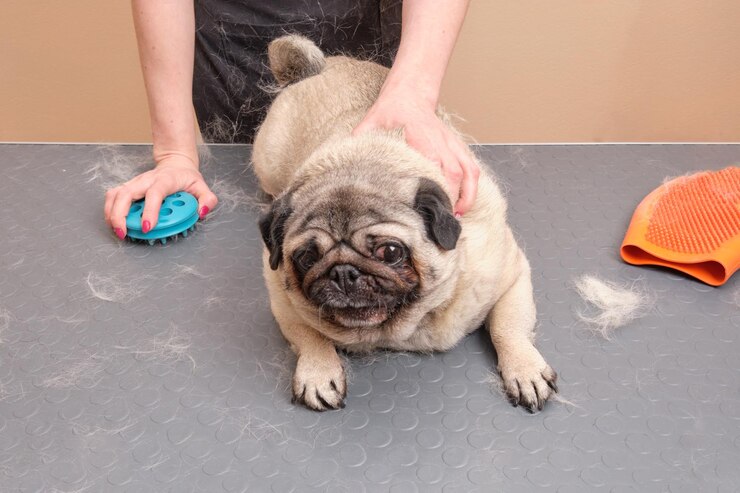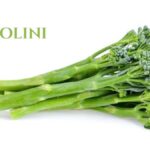Pugs are adorable little dogs with a charming personality and a distinctive appearance. However, one feature that many pug owners find challenging is their shedding. Pugs are known for shedding a fair amount of fur, especially during certain seasons. While shedding is a natural process for most dogs, it can become a nuisance if not managed properly.
In this article, we’ll explore why pugs shed, the factors contributing to their shedding, and offer some helpful tips on managing and reducing shedding to keep your home clean and your pet comfortable.
Why Do Pugs Shed?
Like all dogs, pugs shed to maintain healthy skin and regulate their body temperature. Shedding helps them get rid of old, damaged, or unwanted fur and makes way for fresh, new hair. However, pugs have a particular type of coat that requires more attention.
Pugs have a double coat, consisting of a soft, dense undercoat and a longer, coarser outer coat. This combination helps them stay warm during cooler months but also makes them prone to more shedding. Their undercoat, in particular, sheds more often than the outer coat, which can result in noticeable fur loss.
There are several reasons why pugs shed:
- Seasonal Shedding: Pugs, like many other dogs, experience seasonal shedding. During the warmer months, pugs shed more fur to keep themselves cool, and during the colder months, they shed less to retain warmth.
- Health and Diet: Poor diet, allergies, or skin conditions can cause excessive shedding. Ensuring your pug receives the right nutrients and has a healthy skin condition can reduce the amount of fur they lose.
- Hormonal Changes: Just like humans, dogs undergo hormonal changes. Female pugs, for example, may shed more during their heat cycle or pregnancy.
- Age and Stress: Older dogs or those experiencing stress or anxiety may also shed more than usual. In some cases, environmental stressors can increase shedding.
Tips for Managing Pug Shedding
While shedding is a normal part of a pug’s life, there are several strategies you can use to manage it. With the right grooming practices and care, you can reduce the amount of fur your pug sheds and maintain a clean home.
1. Regular Grooming is Essential
Pugs have short coats, but that doesn’t mean grooming is unnecessary. Regular grooming helps to remove loose hair, dirt, and debris from their fur, reducing the amount of hair that ends up on your furniture or floors.
Brush your pug at least 2-3 times a week using a soft-bristle brush or a deshedding tool. This will help to remove dead hair from their undercoat and prevent matting. Be gentle while brushing, as pugs have sensitive skin, and excessive pulling can lead to discomfort or injury.
2. Bathing Your Pug Properly
While over-bathing your pug can lead to dry skin and irritation, occasional baths are helpful in controlling shedding. Bathing your pug with a dog-friendly shampoo can help remove loose fur and keep their skin healthy.
Bathing every 4-6 weeks is usually sufficient unless your pug gets particularly dirty. Be sure to thoroughly rinse out the shampoo to prevent irritation.
3. Maintain a Healthy Diet
A healthy diet plays a crucial role in the condition of your pug’s skin and coat. Pugs who are fed a well-balanced, high-quality diet tend to have shinier coats and shed less. Omega-3 fatty acids, often found in fish oils, help promote healthy skin and reduce shedding.
Consult with your vet about the best diet for your pug, especially if they are shedding excessively. A balanced diet can make a significant difference in managing pug shedding.
4. Provide Plenty of Hydration
Dehydration can lead to dry, flaky skin, which in turn can increase shedding. Ensure your pug has constant access to fresh, clean water. Keeping your pug hydrated will help maintain healthy skin and reduce excessive hair loss.
5. Consider Allergy Treatments
Some pugs suffer from allergies that contribute to excessive shedding. If your pug is scratching a lot, has inflamed skin, or seems to be shedding more than usual, consider consulting your vet. They may recommend allergy treatments or changes in diet to reduce shedding and improve skin health.
6. Use Specialized Products
There are various products designed specifically to reduce shedding in dogs. These include de-shedding shampoos, conditioners, and even sprays that can help keep fur from falling out too much. Consult your vet to find out which products are best for your pug’s skin type and condition.
7. Control Stress Levels
Stress is a major factor that can contribute to excessive shedding. Pugs, like all dogs, can shed more if they are anxious or stressed. Try to identify and reduce any stress factors in your pug’s environment.
Creating a calm and peaceful living space, using calming aids like pheromone diffusers, and ensuring regular exercise and playtime can help reduce your pug’s stress levels and, in turn, control shedding.
The Role of Regular Vet Check-ups
Regular veterinary check-ups are essential in ensuring your pug stays healthy. Your vet can identify any underlying health issues that could contribute to excessive shedding, such as skin infections, parasites, or hormonal imbalances.
If your pug experiences sudden or severe shedding, it’s crucial to consult with your vet to rule out any medical conditions that could be causing the problem. Addressing health issues early can prevent further shedding and ensure your pug’s coat remains in top condition.
Dealing with Pug Shedding in Your Home
In addition to taking care of your pug’s grooming needs, it’s also important to manage the fur in your home. Here are some tips to keep your living space clean despite your pug’s shedding:
- Vacuum regularly: Invest in a good vacuum cleaner designed for pet hair. Vacuum your floors, furniture, and upholstery at least twice a week to keep shedding under control.
- Wash pet bedding often: Pugs spend a lot of time in their beds, and fur tends to accumulate there. Wash their bedding every 1-2 weeks to keep it clean and free of excessive hair.
- Use furniture covers: If your pug loves lounging on the couch, consider using slipcovers that can be easily removed and washed to manage pet hair.
Conclusion
Pug shedding is a natural process, but it doesn’t have to be overwhelming. By understanding why pugs shed and implementing regular grooming routines, a healthy diet, and stress-reducing measures, you can manage shedding and keep your pug comfortable. With a bit of care and attention, you can minimize the amount of fur in your home while ensuring your pug maintains a healthy, shiny coat.
FAQs
How often should I brush my pug?
You should brush your pug at least 2-3 times a week to keep their coat healthy and manage shedding.
Why is my pug shedding so much?
Excessive shedding could be due to seasonal changes, health issues, poor diet, or stress. It’s best to consult a vet if the shedding seems abnormal.
Can bathing help reduce shedding?
Bathing can help reduce shedding by removing loose fur, but it should be done in moderation to avoid drying out your pug’s skin.
What is the best diet for reducing pug shedding?
A diet rich in Omega-3 fatty acids and high-quality protein can help reduce shedding and improve your pug’s coat condition.
How can I reduce pug shedding in my home?
Regular vacuuming, washing your pug’s bedding, and using furniture covers can help manage the fur that accumulates in your home.







